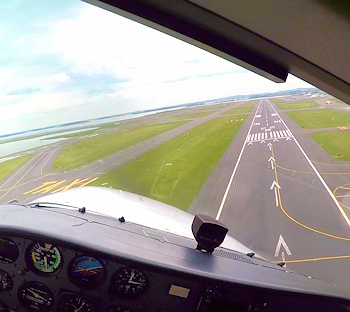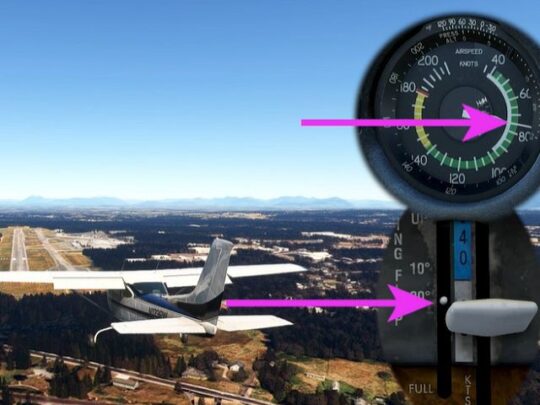Subscriber question:
"Is slipping a good technique for losing altitude quickly on final approach? Is it best to slip to the left or right (or does it matter)?" - Jerry G.
Wally:
 “Let’s back up just a little and talk about slips. There are two kinds of slips. One is a side slip and the other is a forward slip.
“Let’s back up just a little and talk about slips. There are two kinds of slips. One is a side slip and the other is a forward slip.
A side slip is used primarily to correct for crosswind on landing. So now you can remember the difference—side wind, use a side slip. To use a side slip, the pilot puts a wing down into the crosswind which will correct for left or right drift and he keeps the aircraft pointed parallel to the runway with the rudder.
To lose altitude quickly you need a forward slip. To induce an effective forward slip, the pilot needs to drop one wing and apply a large amount of opposite rudder. Remember to keep the nose well below the horizon during the slip. Since you now have crossed controls, the last thing you want is a stall at low altitude. In addition, the airspeed indicator may be inaccurate as it is not traveling parallel to the direction of flight. Another reason to keep that nose down and maintain an extra airspeed margin is that you have a higher descent rate than normal and it will take some energy, as in extra airspeed, to fix that before touchdown.
You can slip with or without flaps unless prohibited by your Pilot’s Operating Handbook.
If there is no crosswind, you can slip in either direction. Typically if there is a crosswind, you would put the low wing into the wind as that has you positioned nicely to go into the sideslip for the crosswind landing.
How about the recovery from a steep forward slip? I have already mentioned carrying some extra airspeed because of the high descent rate. You may also want to discontinue the slip high enough to stabilize over the runway. When ready to recover you should first release most of, but not all of the opposite rudder. This will allow the airplane to now align more closely with the flight path as you then level the wings with aileron. Once aileron is neutral, rudder should also be neutral.
So, remember when practicing slips, don’t slip up and get too slow or recover too low and you’ll do just fine.”
In which direction are you more comfortable doing a slip to lose altitude?

